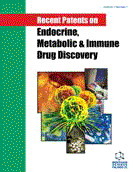Abstract
Plant sterols and stanols are substances with structural homology to cholesterol, which exhibit hypocholesterolemic properties. They compete cholesterol for intestinal absorption, leading to inhibited entry of cholesterol into circulation and consequently to its lower serum concentration. Since hypercholesterolemia is closely linked with the development of cardiovascular disease (CVD), the cholesterol lowering agents play key-role in preventing CVD. A large body of evidence shows the cholesterol lowering effect of plant sterol and stanol consumption. Due to this significant property the induction of these substances in appropriate amounts in the daily food pattern of mildly hypercholesterolemic patients becomes an exigency since it is an alternative for pharmaceutical treatment. A large number of novel plant sterol and stanol derivatives have been developed with a purpose to find applications in food and pharmaceutical industry. The derivatives provide with two basic advantages: a) enhancement of lipid solubility or acquisition of water solubility with a purpose to extend the usefulness and b) additional beneficial effects for cardiovascular system such as antioxidant, hypotriglyceridemic and antiinflammatory. The article discusses the role of plant sterol and stanol consumption in lowering serum cholesterol concentration and presents patented derivatives of these substances, which can be incorporated into food and pharmaceutical products and exhibit beneficial properties.
Keywords: Plant sterols, plant stanols, cholesterol, hypocholesterolemic properties, atherosclerosis, cardiovascular disease
 12
12





















